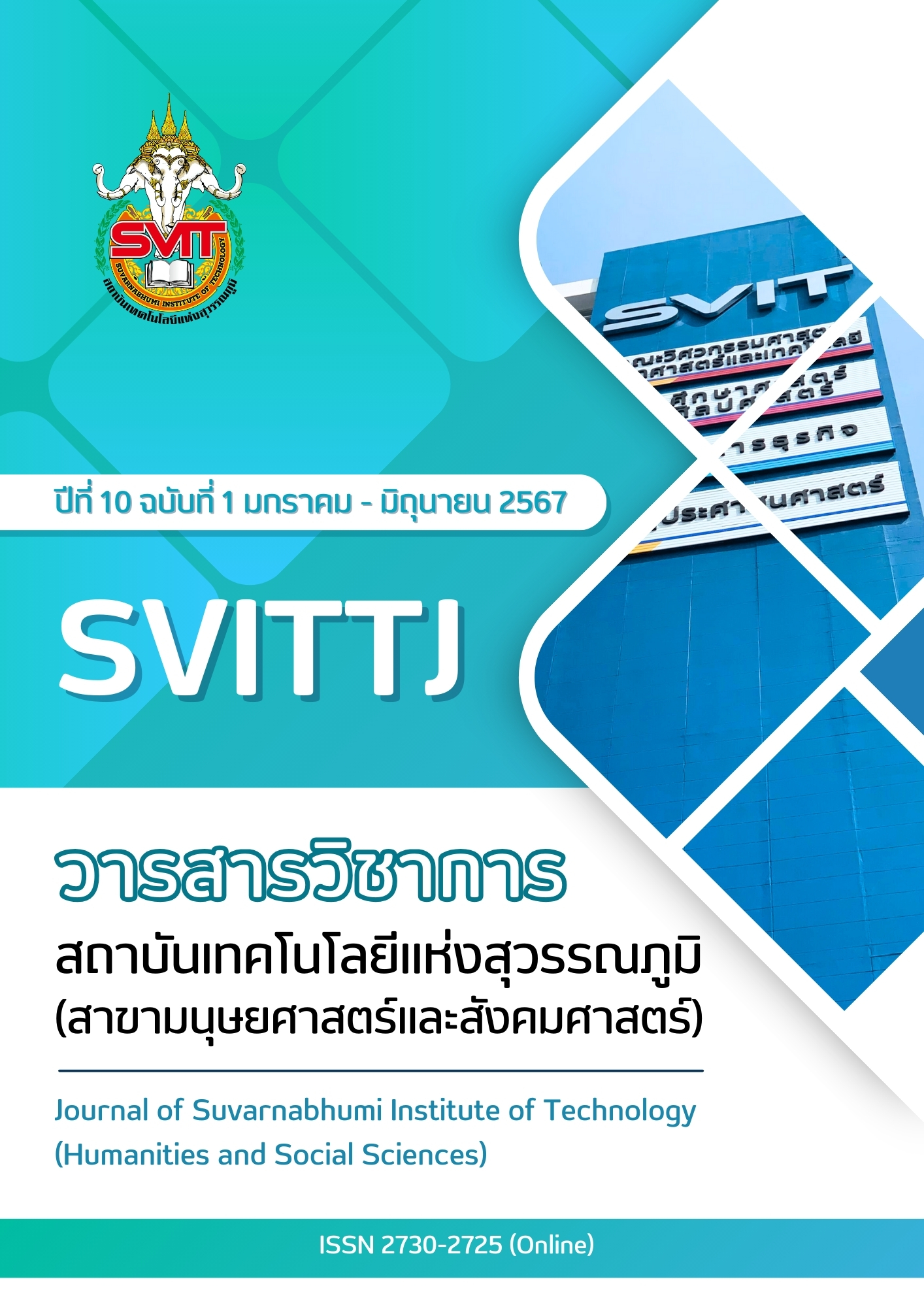GUIDELINES FOR IMPROVING THE RESOURCE MANAGEMENT PROCESS OF NEW PLAN ENGINEERING CO., LTD.
-
Keywords:
Resource Management, Steel Structures, Construction Business, Process ImprovementAbstract
The purpose of this study is to examine problems and obstacles in the resource use management procedure and to provide guidance for New Plan Engineering Co., Ltd.'s resource use management procedure. With the help of in-depth interviews with fifteen important participants in the company's resource utilization process, this study is qualitative in nature. The study's findings indicate that problems and obstacles in the process of managing the use of resources (steel) include new client modifications that affect the quantity, size, and shape of resources used. The provider of raw materials is not a direct source of production and does not own an exhaustive list of items as specified in the purchase order. Before the work pieces were cut, the raw materials were not inspected, and the quality of the raw materials was below engineering norms, and employees without prior welding cycle inspection experience. A guidance for enhancing the resource use management procedure should be provided by the company. It is important to notify all parties concerned. It is recommended that workers be sent for further training in design knowledge. The company has to locate a product supplier that can supply every product. Locate a steel vendor who has the capacity to produce and supply raw materials on time. Prior to cutting the workpiece, a document verifying the accuracy of the raw material list should exist. Every item should have the necessary paperwork ready for delivery. At every stage, comprehensive documentation for the recipient and sender to review the workpiece should be created. Further instruction on weld inspection methods ought to be provided. Every three days, a work progress meeting should be convened to review the status of the job and address any issues. A check list for work delivery should also be created.
References
จิราภรณ์ บุญยิ่ง. (2559). การบริหารจัดการธุรกิจรับเหมาก่อสร้างในนิคมอุตสาหกรรมมาบตาพุด. วารสารวิจัยราชภัฏพระนคร สาขามนุษยศาสตร์และสังคมศาสตร์, 11 (1), 136-149.
ธิดารัตน์ ภัทรพันธกุล และศรัณยู กาญจนสุวรรณ. (2563). การปรับปรุงกระบวนการจดัซื้อด้วยแนวคิดลีน กรณีศึกษาบริษัทให้บริการทางการบินนอกชายฝั่ง. WMS Journal of Management, 9 (3), 90-101.
ศลิษา ภมรสถิตย์. (2547). การจัดการดำเนินงาน. กรุงเทพฯ:สำนักพิมพ์ท๊อป.
ศศิหงส์์ เกษมจารุ ธีีรวุฒิิ บุณยโสภณ และ มนััส ชููผกา. (2565). การพััฒนารูปแบบการบริหารจััดการธุุรกิจก่อสร้างแบบครบวงจรเพื่อเพิ่มขีีดความสามารถในการแข่งขัน. วารสารวิชาการพระจอมเกล้้าพระนครเหนือ, 32 (2), 486-496.
อรอุมา หงษ์เหิน และ เพ็ญศรี เจริญวานิช. (2561). ปัจจัยที่มีอิทธิพลต่อการลดเวลาในอุตสาหกรรมก่อสร้าง:กรณีศึกษาภาคตะวันออกเฉียงเหนือ. วารสารวิจัยมหาวิทยาลัยขอนแก่น (ฉบับบัณฑิตศึกษา) สาขามนุษยศาสตร์และสังคมศาสตร์, 6 (1), 11-21.
Balci, G., Caliskan, A., Yuen, K.F., 2019. Relational bonding strategies, customer satisfaction, and loyalty in the container shipping market. International Journal of Physical Distribution & Logistics Management, 49 (8) ,816–838.
Gann, D. M. & Salter, A.J. (2000). Innovation in project-based, service-enhanced firms: the construction of complex products and systems. Research policy, 29 (7-8), 955-972.
Khompatraporn, C., & Somboonwiwat, T. (2017). Causal factor relationsof supplychain competitiveness via fuzzy DEMATEL method for Thai automotive industry. Production Planning & Control, 28(6–8), 538–551.
SCB Economic Intelligence Center. (2566). Construction outlook 2023. [เว็ปไซด์] สืบค้นจาก https://www.scbeic.com/th/detail/file/product/8997/gkvm085n8w/Industry-Insight_Construction_20230512.pdf.
Zidane, Y.J.T. & Andersen, B. (2018). The top 10 universal delay factors in construction projects. International Journal of Managing Projects in Business, 11 (3), 650-672.
Downloads
Published
Issue
Section
License
Copyright (c) 2024 Suvarnabhumi Institute of Technology

This work is licensed under a Creative Commons Attribution-NonCommercial-NoDerivatives 4.0 International License.
บทความที่ได้รับการตีพิมพ์เป็นลิขสิทธิ์ของวารสารวิชาการ สถาบันเทคโนโลยีแห่งสุวรรณภูมิ
ข้อความที่ปรากฏในบทความแต่ละเรื่องในวารสารวิชาการเล่มนี้เป็นความคิดเห็นส่วนตัวของผู้เขียนแต่ละท่านไม่เกี่ยวข้องกับสถาบันเทคโนโลยีแห่งสุวรรณภูมิ และคณาจารย์ท่านอื่นๆในสถาบันฯ แต่อย่างใด ความรับผิดชอบองค์ประกอบทั้งหมดของบทความแต่ละเรื่องเป็นของผู้เขียนแต่ละท่าน หากมีความผิดพลาดใดๆ ผู้เขียนแต่ละท่านจะรับผิดชอบบทความของตนเองแต่ผู้เดียว





